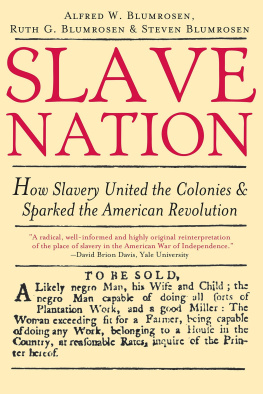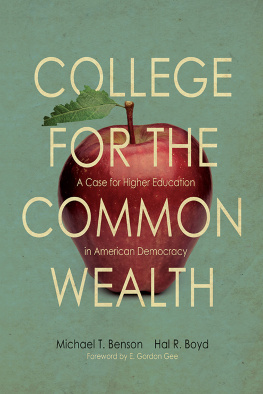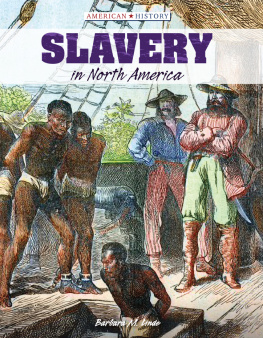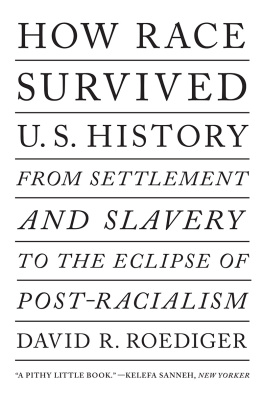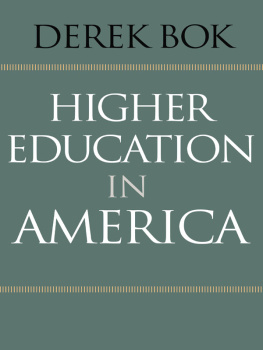A Covenant with Color: Race and Social Power in Brooklyn
In the Company of Black Men: The African Influence on
African American Culture in New York City

TO
Gloria Wilder
Contents

There is no drama like the drama of history.
C. L. R. JAMES, THE BLACK JACOBINS (1938)
[Henry] Watsons behavior merely showed that
Connecticut tutors could become Alabama cotton
planters in a single generation.
HERBERT GUTMAN, THE BLACK FAMILY
IN SLAVERY AND FREEDOM (1976)
A catastrophe occurred which was so great that it is
little discussed. Else it would dominate all discourse
about the human story in the Western Hemisphere.
Plymouth Rock and Pilgrims, Columbus and Captain
John Smith would shrink to footnotes. Even the losses
of the American Civil War of 18611865 were trifling
when compared to the Great Dying.
ROGER G. KENNEDY, HIDDEN CITIES (1994)

A Connecticut Yankee at an Ancient Indian Mound
Remember me to all my friends and relationsI wish you and others of the family as many as can write to write to me often and tell me about every thing and any thing, Henry Watson begged his father, about every body and thing I care any thing about. Written from New York in November 1830, where the young man had booked passage on the schooner Isabella to Mobile, Alabama, the letter mixed a premature homesickness with a sense of youthful expectation. Watson was from East Windsor, Connecticut, just north of Hartford, and he was heading south to find work as a teacher in an academy or on a plantation. He carried a packet of introductory letters from his professors at Washington College (Trinity) in Hartford and Harvard College in Cambridge, family friends including Professor Benjamin Silliman of Yale College, and his fathers business acquaintances. After graduating from Yale, Silliman had considered a job in the South, and his brother Selleck did leave Yale to become a tutor in Charleston, South Carolina.
College initiated Henry Watson into the slave regimes of the Atlantic world. The founding, financing, and development of higher education in the colonies were thoroughly intertwined with the economic and social forces that transformed West and Central Africa through the slave trade and devastated indigenous nations in the Americas. The academy was a beneficiary and defender of these processes.
College graduates had exploited these links for centuries. They apprenticed under the slave traders of New England, the Mid-Atlantic, and Europe. They migrated to the South and to the West Indies for careers as teachers, ministers, lawyers, doctors, politicians, merchants, and planters. The end of the slave trade and the decline of slavery in the North did not break these ties. The antebellum South represented a field of opportunity, where the wealth of the cotton planters was funding the expansion of the educational infrastructure.
The Isabella could carry a handful of passengers, and Watson had a small, comfortable cabin. He stored his trunk on board and then explored New York City while he waited for departure. He detailed his spending, documented his efforts to be frugal wherever possible, and sent weekly updates on his progress to his father. Those communications were also filled with complaints about things like the cost of the books that he needed to further his education. Like Selleck Silliman, Watson did not intend to spend his life as a plantation teacher. He wanted to earn a salary for a year, improve his health in a warmer climate, and then study law. Later that month, this twenty-year-old aspiring tutor boarded the schooner for the voyage south.
An education in Hartford and Cambridge was reasonable preparation for living among the slaveholders of Alabama. The presidents of Connecticuts colleges and universities led one of the most extreme branches of the American Colonization Societyfounded in 1817 to transplant free black people outside the United States. New Englands colonizationists cast African Americans as a threat to democracy and social order, encouraged campaigns to halt the development of free black communities, and even destroyed schools for African American children. They silenced debate about slavery and vehemently attacked abolitionism as the cause of political tensions between the slave and free states.
Harvard was approaching its two hundredth anniversary, which meant that it was also nearing the bicentennial of its intimate engagement with Atlantic slavery. Beginning with the first graduating class, boys from Cambridge had been seeking fortunes in the plantations. By the time Henry Watson matriculated, Harvards history was inseparable from the history of slavery and the slave trade.
College had armed Watson with theories of racial difference and scientific claims about the superiority of white people. The academy refined these ideas and popularized the language of race, providing intellectual cover for the social and political subjugation of nonwhite peoples. In a class with the Harvard anatomist John Collins Warren, Watson learned that in physical development, cultural accomplishment, and intellectual potential, black people sat at the bottom of humanity. Professor Warren also revealed that the most advanced scientific research confirmed the biological supremacy of the boys in that room. It is likely that Henry Watson Jr. already believed in the natural dominion of white people, and that the scientific certainty with which most of his professors argued the primacy of Europeans and the backwardness of Africans only confirmed his views. Harvard, like Washington College, was a pillar of the antebellum racial order. Not only were the students, the faculties, the officers, and the trustees white, but people of color came to campus only as servants and objects.
From Mobile, Watson traveled north toward Greensboro, through territories where plantations are very thick. It was now December and he was focused on securing a salary. These regions seem to be a fine place for female teachers, they are in great demand, he reported despondently to his father. He still could not find a teaching job at an academy or on a plantation, and an opening at the public school would but little more than pay my board. While in Greensboro, he called upon Dr. John Ramsey Witherspoona South Carolina relative of the Reverend John Witherspoon, president of the College of New Jersey (Princeton) and signer of the Declaration of Independencewho was rumored to be in need of a teacher. The six months since Watson left home had been spent to little profit, which was all the more disappointing and insulting in a place he believed to be dominated by greedy planters, and where the people are almost ignoramuses on some things. The Doctors are miserable, the Lawyers are not much better. To make matters

Professor John Collins Warren of Harvard
SOURCE: Countway Library, Harvard Medical School
I PASSED AN INDIAN MOUND
In May 1831 this would-be tutor packed his belongings and prepared to leave Alabama on horseback. The idea of returning to New England by horse likely had come from Caleb Mills, a New Hampshire resident who graduated from Dartmouth College in 1828. The two men passed near Northampton, Massachusetts, as


